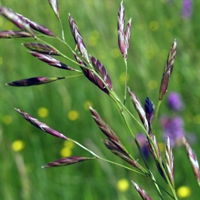Effect of four pre-planted cover crop species on weed control and population dynamics

Accepted: 7 July 2020
HTML: 24
All claims expressed in this article are solely those of the authors and do not necessarily represent those of their affiliated organizations, or those of the publisher, the editors and the reviewers. Any product that may be evaluated in this article or claim that may be made by its manufacturer is not guaranteed or endorsed by the publisher.
The present research was conducted to assess the competition of four cover crop species including the Festuca ovina L., Festuca rubra L., Agropyron desertorum (Fischer ex Link) Shultes, and Bromus tomentellus Boiss with the weeds as well as enhancement of their establishment. B. tomentellus with 7.7 and 8.73 t h–1 had the highest dry weight production in 2016 and 2017, respectively. In 2016, the highest reduction in the dry weight of the weeds (73%) was observed for the F. ovina, at the rate of 600 g active ingredient per ha–1 of herbicide. In 2017, the highest reduction in the dry weight of the weeds (90%) was recorded at the rate of 600 g active ingredient per ha–1 of herbicide for the. Dry weight of the dominant weeds decreased by 70% approximately with the and at the rate of 600 g active ingredient per ha–1 of herbicide. Shannon Wiener index decreased in all the treatments following the increase in the herbicide concentrations in 2016 and 2017. The interaction of cover crop species and herbicide on the Margalef index was significant in all the treatments in 2016 except for A. desertorum, as well as A. desertorum and in 2017. Margalef index reduced following the increase in the herbicide concentration in all the treatments.
Highlights
- Bromus tomentellus Bioss and Festuca ovina L had the highest biomass production.
- Bromus tomentellus (90%) and Festuca ovina (73%) treatments had the highest decrease in total weed dry weight compared to control.
- The highest reduction in dry weight of total dominant weeds was influenced by B. tomentellus and Festuca ovina 73% and 83% at the rate of 600 g a.i. ha–1 of Bromocide M.A. EC respectively.
- Margalof index reduced following the increase in herbicide concentration in all treatments.
- Bromus tomentellus, Festuca ovina has the potential for reducing weeds in orchards and croplands.
How to Cite
PAGEPress has chosen to apply the Creative Commons Attribution NonCommercial 4.0 International License (CC BY-NC 4.0) to all manuscripts to be published.

 https://doi.org/10.4081/ija.2020.1595
https://doi.org/10.4081/ija.2020.1595







